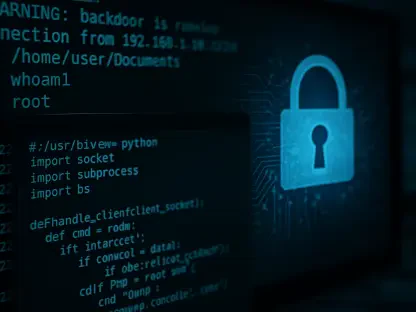The Digital Operational Resilience Act (DORA) is set to become a transformative regulation for financial entities across the European Union, with a fast-approaching compliance deadline of January 17, 2025. As this critical date nears, financial institutions are intensifying their efforts to align with the stringent requirements set forth by DORA. This legislation aims to fortify operational resilience and ensure meticulous risk management of information and communication technology (ICT) services such as cloud computing, software-as-a-service, digital data, and IT infrastructure. By harmonizing existing EU requirements and introducing new standards, DORA seeks to address the multifaceted challenges that financial entities face in our increasingly digitized world. This article delves into the various aspects of DORA, the challenges faced by financial entities, and the proactive measures being taken to ensure compliance.
Understanding DORA and Its Scope
DORA encompasses a diverse range of financial institutions, including investment firms, fund management companies, and insurance undertakings, each required to meet its rigorous demands. The primary objective of DORA is to bolster operational resilience, specifically targeting ICT services to prevent and mitigate potential disruptions. At the heart of DORA lies the ICT Risk Management Framework, which mandates financial entities to adopt a comprehensive and consistently reviewed framework. This includes vital components like cybersecurity training, business continuity planning, and ICT asset management. Thorough risk assessment and solid preventive measures ensure that entities can swiftly respond to potential threats, safeguarding the stability and integrity of financial operations.
Digital Operational Resilience Testing is another cornerstone of DORA, requiring entities to conduct thorough testing of their ICT systems and tools. This is pivotal in identifying and rectifying vulnerabilities before they can be exploited. For systemically important entities, this obligation includes undergoing threat-led penetration testing every three years. This stringent approach underscores the commitment to prevent disruptions and ensure that systems can withstand and recover from adverse conditions effectively. By enforcing these continuous and rigorous testing requirements, DORA ensures a robust defense mechanism against evolving digital threats.
ICT-related Incident Management and Reporting
A robust framework for detecting, classifying, and reporting ICT-related incidents is essential under DORA. Financial entities must ensure that incidents are reported within specified timeframes, enhancing transparency and accountability. This requirement aims to mitigate the impact of ICT-related disruptions and ensure swift recovery. Thorough incident management entails not only swift detection but also accurate classification of incidents, enabling a well-coordinated response to minimize damage and recovery time.
ICT Third-party Risk Management constitutes another critical aspect of DORA, emphasizing the importance of managing and governing relationships with external ICT service providers. All contracts with third-party ICT service suppliers must incorporate mandatory provisions covering several areas like service locations, data confidentiality, business continuity, incident reporting, and adherence to ICT security standards. These stringent requirements ensure that third-party services align with the entity’s operational resilience objectives, mitigating risks that could arise from external dependencies. Recognizing the interconnected nature of modern financial services, DORA mandates thorough oversight of third-party providers to maintain the overall resilience of financial operations.
Register of Information Requirement
To bolster transparency and accountability, DORA mandates that financial entities maintain and submit comprehensive registers detailing contractual arrangements with ICT service providers to their national competent authority in the EU. This requirement was prioritized by the European Supervisory Authorities (ESAs), with final templates for these registers released to aid compliance. In preparation for this mandate, a “dry-run” reporting exercise occurred in 2024 to help entities fine-tune their submission processes. This preparatory activity was crucial in identifying potential challenges and ensuring that entities could adeptly fulfill their reporting obligations.
The necessity for detailed registers underscores the importance of maintaining accurate and comprehensive records, enhancing entities’ ability to manage third-party ICT services effectively. By documenting all relevant contractual arrangements, entities demonstrate their commitment to complying with DORA requirements and safeguarding operational resilience. The process of maintaining these registers also equips entities with a clearer understanding of their third-party service landscape, enabling them to address any deficiencies proactively. This meticulous documentation is essential for fostering a culture of transparency and accountability within the financial sector.
Key Trends in Contract Remediation
Contract remediation efforts have revealed several key trends, reflecting the challenges and best practices in achieving DORA compliance. One significant challenge lies in the broad interpretation of what constitutes an ICT service provider. Financial entities may classify certain technology providers as ICT service providers, even if the providers do not view themselves as such. This often leads to debates on whether specific ICT services truly support critical or important functions, necessitating validation and thorough assessment. The ambiguity in defining ICT service providers underscores the complexity of ensuring comprehensive compliance with DORA’s mandates.
The focus on criticality is paramount, as third-party ICT services supporting critical or important functions have a significant impact on ICT risk management and major incident reporting requirements. Addressing this criticality requires a meticulous approach to identifying and prioritizing services that could pose the most significant risks. DORA’s embedded proportionality principle mandates that requirements adapt based on the nature, scale, and complexity of services, ensuring that compliance efforts are scalable and tailored appropriately. This principle highlights the importance of a nuanced approach to contract remediation, tailored to the unique needs and circumstances of each entity.
Leveraging Existing Terms and Global Approach Challenges
Many financial entities have preemptively amended contracts to comply with existing outsourcing regulations, which streamlines efforts to close remaining gaps and meet DORA requirements. Some technology providers have proactively developed their own contract templates that align with their specific service needs, facilitating smoother compliance processes. This proactive approach leverages existing frameworks to accelerate the transition towards full compliance with DORA, mitigating redundant efforts and ambiguities. By building on established protocols, entities can focus their resources on addressing the most critical compliance gaps effectively.
Flow-down terms to subcontractors are crucial, as entities need visibility and certain contractual rights for their supply chain supporting critical functions. This visibility ensures that all subordinate relationships adhere to the same high standards required by DORA. Remediation efforts are ongoing, especially since final EU legislation on subcontracting under DORA is still pending. The deferment of final regulations introduces a layer of complexity, requiring entities to adapt and remain vigilant. Moreover, the global approach challenges arise from differences in regional regulations, such as DORA, UK operational resilience rules, and guidance from authorities like the Monetary Authority of Singapore. Enforcing uniform controls at a global level is challenging, but modular contract terms capturing key principles can help address regional variations and ensure overarching coherence.
Preparing for the Compliance Deadline
Under DORA, a strong framework for identifying, categorizing, and reporting ICT-related incidents is crucial. Financial institutions must report these incidents within set timeframes to enhance transparency and accountability. This requirement helps mitigate the effects of ICT disruptions and ensures quick recovery. Effective incident management includes rapid detection and precise classification, allowing for a coordinated response that minimizes damage and recovery time.
Another crucial aspect of DORA is ICT Third-party Risk Management, which highlights the need to manage relationships with external ICT service providers properly. Contracts with third-party ICT suppliers must include mandatory clauses on several key areas such as service locations, data confidentiality, business continuity, incident reporting, and adherence to ICT security standards. These rigorous requirements ensure that third-party services align with the entity’s objectives for operational resilience, reducing risks from external dependencies. Recognizing the interconnected nature of modern financial services, DORA mandates comprehensive oversight of third-party providers to maintain the overall resilience of financial operations.









